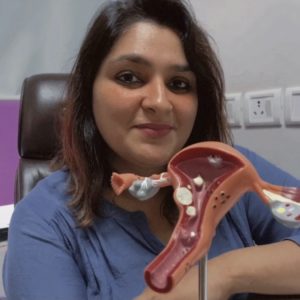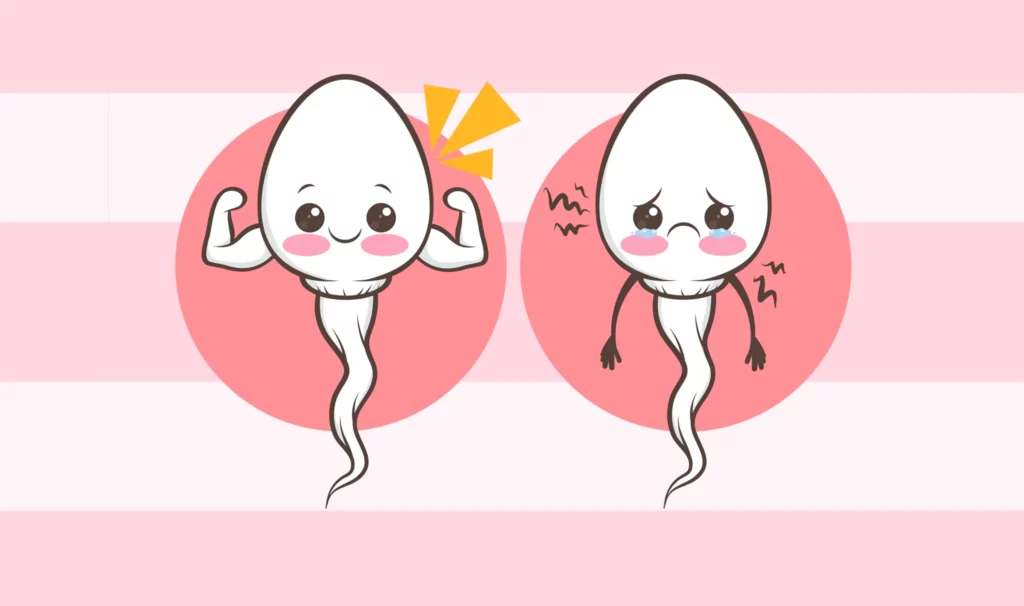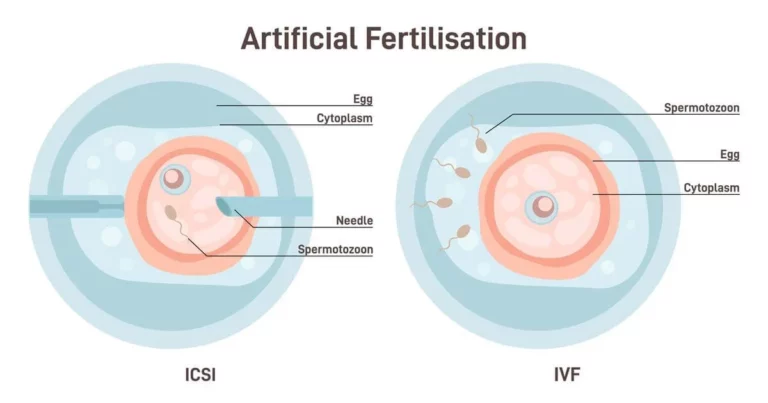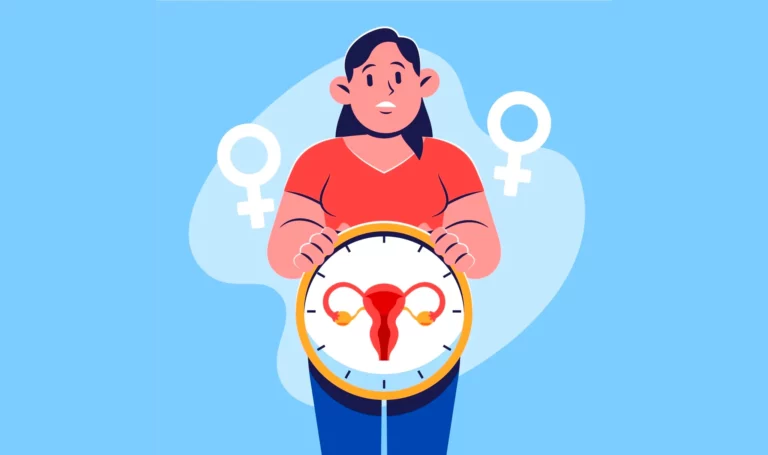Infertility affects millions of couples worldwide. According to the World Health Organization (WHO), about 17.5% of the adult population, roughly 1 in every 6 people have some kind of infertility and may need clinical help. Various factors can cause infertility and one such common male factor is abnormal sperm morphology.
Sperm morphology refers to the structure, shape and size of the sperm cells. Though not solely responsible for male-factor infertility, abnormal sperm morphology can significantly affect a couple’s ability to conceive and carry a healthy pregnancy.
In this article, we will talk through the concept of abnormal sperm morphology, its effects on conception and pregnancy, how it is evaluated, its causes, and available treatments, along with natural ways to improve sperm morphology.
Increase your pregnancy chances with Nory Ovulation Kit
What is Abnormal Sperm Morphology?
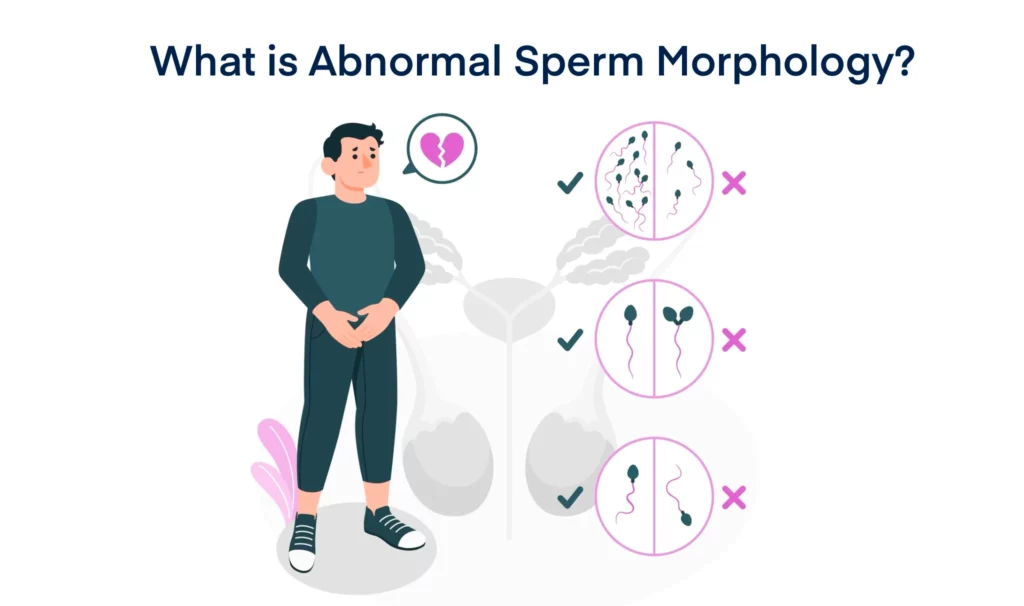
Also referred to as teratozoospermia, abnormal sperm morphology is characterized by over 80% of sperm cells being morphologically (in shape and structure) abnormal. A typically normal sperm has an oval head, a midpiece and a tail. And, any morphological abnormality in sperm can impact their potential to fertilize the egg, declining the chances of successful conception.
Abnormal sperm morphology has its types, that are classified as:
Head Abnormalities
- Large Head: The head of the sperm is abnormally larger than usual, affecting its ability to penetrate the female egg.
- Small Head: The head of the sperm is abnormally smaller than usual, affecting its genetic material.
- Double Head: When two heads are present in a single sperm cell, indicative of a severe functional abnormality.
- Pointed Head: The head of the sperm appears to have a pointed or tapered head instead of a regular oval-shaped head.
Midpiece Abnormalities
- Thick Midpiece: A midpiece contains mitochondria, the energy source for motility. When the midpiece of the sperm is abnormally thick, it impacts its movement.
- Thin Midpiece: The sperm has a thinner midpiece than usual, impacting its function.
Tail Abnormalities
- Short Tail: The tail of the sperm is shorter than usual, affecting its motility and ability to reach the egg.
- No Tail: The sperm does not have a tail making it immotile and unable to swim towards the egg.
- Coiled Tail: The tail of the sperm is coiled or curled, affecting its ability to swim straight towards the egg.
Multiple Abnormalities
When the sperm has a combination of abnormalities, such as having an abnormal head and tail, or having an abnormal midpiece and tail or likewise.
Other Abnormalities
- Amorphous Form: When the sperm does not have a regular shape, it is irregular and shapeless without having a definite structure.
- Cytoplasmic Droplets: Incomplete maturity of the sperm cells, having small residual cytoplasm droplets attached.
Abnormal Sperm Morphology Range
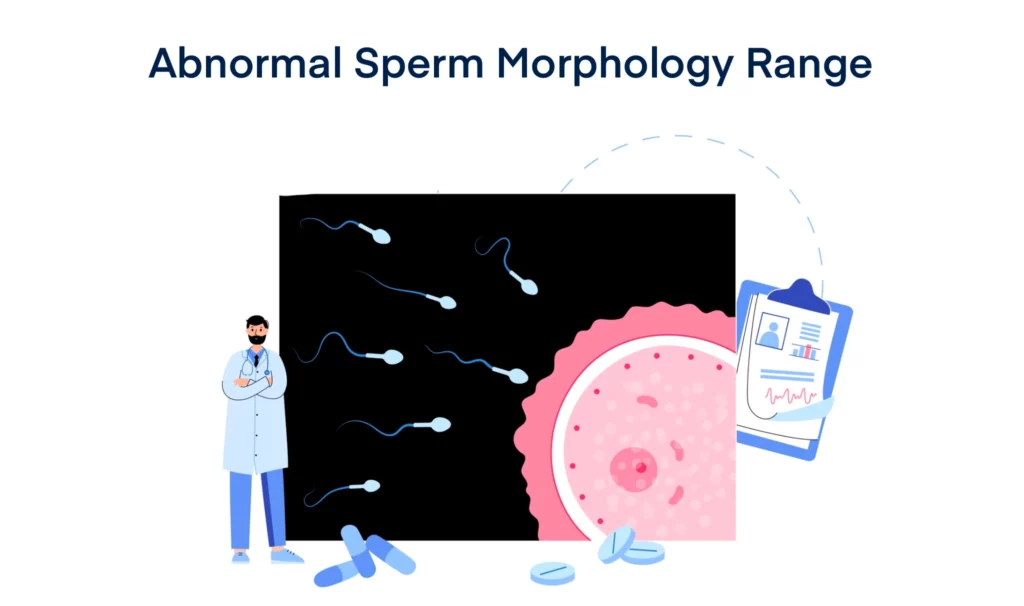
Abnormal sperm morphology is an evaluation of sperm cells in the semen with structural (shape, size) abnormalities. According to the WHO defined standard, a man who has normal sperm morphology must have at least 4% sperm with normal shape and structure. Anything below the above said threshold is abnormal.
Recent statistics show that about 90% of the male-factor infertility cases are related to having abnormal sperm morphology of some degree. Doctors classify the condition differently depending on the severity and type of the sperm abnormality, whether the sperm’s head, tail or midpiece is defected.
Impact of Abnormal Sperm Morphology on Conception and Pregnancy
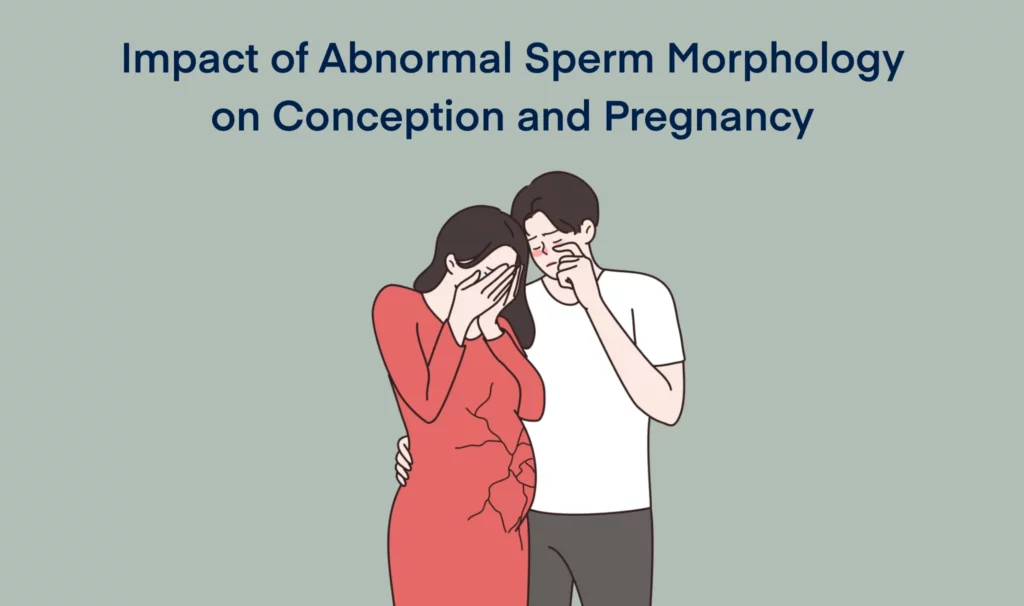
Abnormal sperm can hinder a couple’s ability to conceive and carry a pregnancy in several ways. The shape and structure (morphology) of sperm are essential for motility, egg penetration and fertilization. And, any morphological abnormality in sperm affects their ability to swim efficiently towards the egg and penetrate it, declining the chances of successful fertilization. Additionally, morphological sperm abnormalities are also found to be associated with increased risk of miscarriages and presence of genetic abnormalities in the offspring.
How is a Man Tested for Infertility?

Infertility does not have specific visual symptoms, couples typically come for fertility check ups when they have been trying to conceive for a long time but failing despite trying timed intercourse and other good practices.
In typical cases, general fertility evaluation starts with both partners being evaluated for potential concerns. To detect male infertility, a semen analysis test is performed. This analysis involves the examination of a semen sample collected through ejaculation into a sterile container to ascertain certain parameters, including sperm count, motility and morphology.
Well, it is important to note that abnormal sperm morphology is not the alone factor that contributes to infertility in men. Other factors including low sperm count and poor motility are also responsible factors for male infertility.
How is Sperm Morphology Assessed?

During a semen analysis test, a semen sample is collected from the male through ejaculation, into a container. Now, the sample is put on a slide and examined under a microscope for shape and structural abnormalities. If the semen sample is found to have lower than 4% normal sperm rate as established in the WHO’s strict criteria, the man is diagnosed to have abnormal sperm morphology.
Well, a semen analysis test does not only evaluate morphological abnormalities in sperm but it covers several other sperm health aspects, including:
- Sperm Count: Sperm count is the number of sperm cells in the semen. Normal density anywhere from 15 million to 200 million sperm per mL of semen ejaculated.
- Sperm Motility: The sperm cells’ ability to swim effectively towards the egg.
- Sperm Vitality: The percentage of living sperm in ejaculated semen.
- Semen Volume: Overall quality of semen produced.
Causes of Abnormal Sperm Morphology
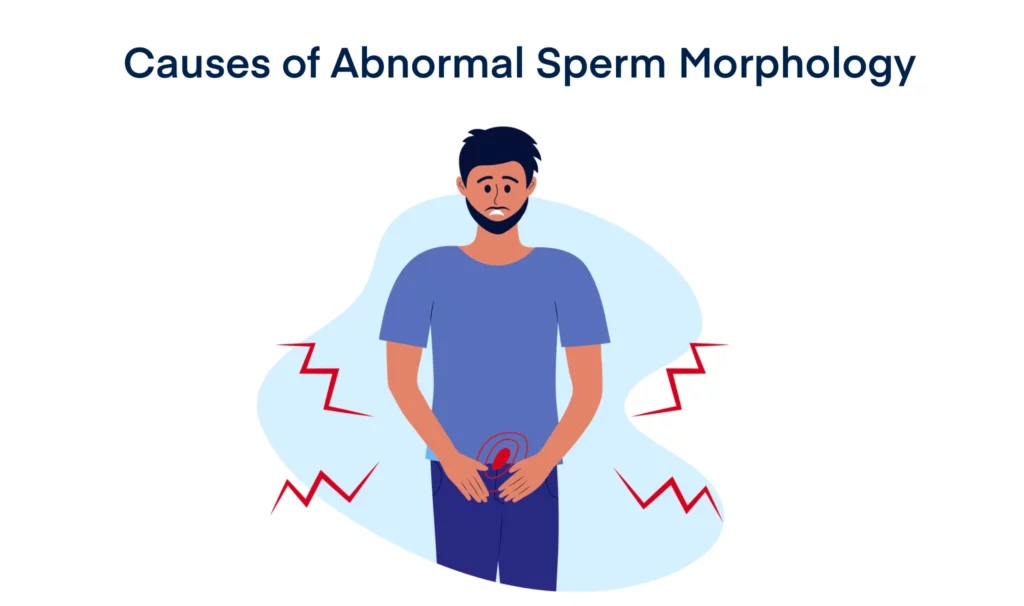
There are multiple factors that can contribute to morphological abnormalities in sperm. These include:
- Hormone Imbalances
- Genetic Abnormalities
- Testicular Infections
- Exposure to Toxins
- Excessive heat to the testicles
- Habits such as smoking, drug use and/or alcohol abuse
- Obesity
- Use of certain medications
- Past surgeries
How to Treat Abnormal Sperm Morphology?
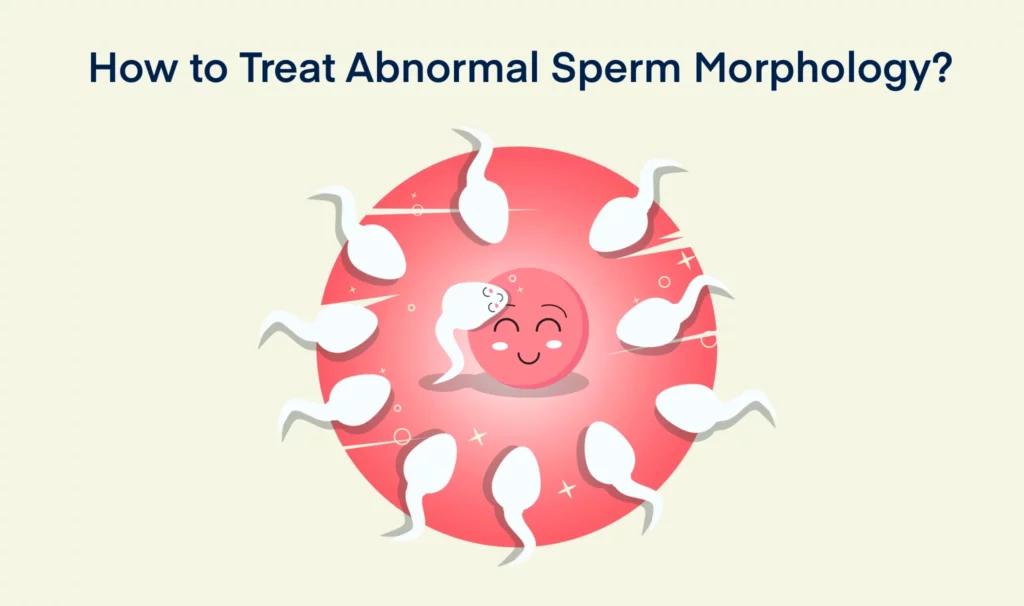
The appropriate abnormal sperm morphology treatment mainly depends on its underlying cause of the couple’s overall fertility. Though morphological abnormalities cannot be treated, reversed or however affect a couple’s personal or sexual life, some medical intervention might be required when they experience difficulty to conceive.
In many cases where sperm abnormality is mild and other fertility concerns are not present, the couple does not actually need any treatment and will be able to conceive by seeking consultation from a fertility specialist.
However, in specific cases where sperm abnormality is severe and other fertility concerns are present, assisted reproductive techniques (ARTs) can help the couple conceive successfully. Common ARTs are:
- In vitro fertilization (IVF): It is a minimally invasive clinical pregnancy procedure that assists conception by facilitating fertilization and egg implantation. This procedure involves fertilizing a woman’s egg with washed and concentrated male partner’s sperm outside her body, typically in a laboratory.
- Intracytoplasmic sperm injection (ICSI): It is an advancement to the traditional IVF procedure. ICSI involves injecting live sperm directly into the woman’s egg to facilitate fertilization.
- Intracytoplasmic morphologically-selected sperm injection (IMSI): An advancement to the ICSI procedure, IMSI involves injecting the most viable and robust morphologically examined sperm into the woman’s egg.
How to Improve Abnormal Sperm Morphology Naturally?
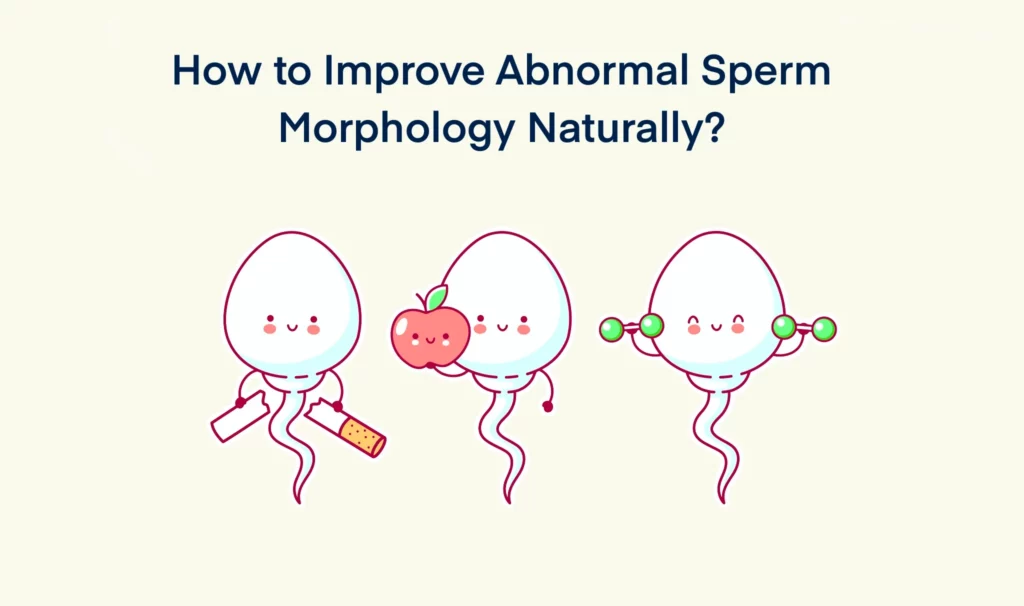
While the medical approach may be required in some extreme cases, there are several natural ways that can help most mild to moderate abnormal sperm morphology cases. These include:
- Maintaining a Healthy Lifestyle: Regularly exercising, eating a balanced diet, and managing stress. Limiting the consumption of alcohol, cigarettes and tobacco products.
- Avoiding excessive exposure of heat to the testicles and environmental toxins.
- Take Supplements: Some studies suggest that taking vitamin C, vitamin E, zinc, and coenzyme Q10 are beneficial for overall sperm health.
The Bottom Line

It is doubtless to say that abnormal sperm morphology significantly affects a couple’s ability to conceive and carry a pregnancy. However, the condition can be managed through proper evaluation and the couple can have a healthy genetic offspring. A semen analysis test can assess the severity of the morphological abnormalities and an appropriate treatment can be administered by the fertility specialist to help the couple conceive. Assisted reproductive technologies such as IVF, ICSI or IMSI can be beneficial. And, most mild cases can be managed without medical interventions, by adopting a healthy lifestyle, taking certain supplements and timing the intercourse.
However, fertility is complex and having the guidance of a fertility specialist is essential to accurately diagnosing the condition, tailoring the treatment for you, and offering emotional support throughout your journey towards parenthood.

